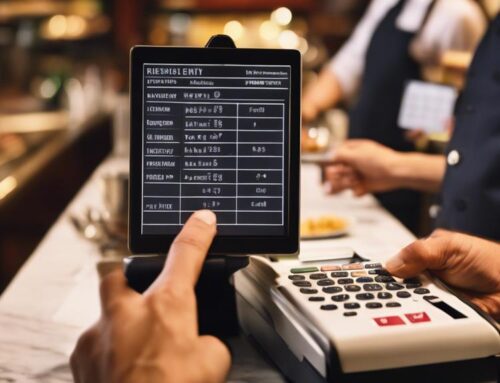When inputting restaurant menu data, use digital solutions like menu input software, forms, and apps for efficiency. Ensure compatibility with existing systems to streamline the process. Focus on organizing menu categories with a clear hierarchy. Develop categorization based on similarities for easy navigation. Write effective descriptions emphasizing unique flavors, quality, and nutrition. Set accurate prices by conducting cost analysis and aligning with value proposition. Enhance menus with high-quality images placed strategically. Ensure data accuracy by implementing validation checks and maintaining consistency. Follow strategies for data accuracy with regular updates and feedback. Maximize customer satisfaction and operational efficiency. Further insights await through strategic menu management.
Options for Menu Input
When considering the options for menu input, start by assessing the efficiency and compatibility with your existing systems. Data entry techniques play a crucial role in streamlining your menu input process. Digital solutions offer innovative ways to input menu data efficiently. Utilizing digital platforms can enhance accuracy and speed, ultimately improving overall workflow.
Digital solutions encompass a range of tools such as menu input software, online forms, and mobile applications. These technologies enable you to input menu items, descriptions, and prices seamlessly. Data entry techniques within these digital solutions may include simple forms for manual input or more advanced features like barcode scanning for inventory items.
Organizing Menu Categories
To effectively organize menu categories, start by creating a clear menu category hierarchy that outlines the structure of your menu. Develop an item categorization system that categorizes each menu item into specific sections based on similarities in ingredients, cuisine type, or popularity. By establishing a logical and easy-to-navigate system, you can streamline menu data input and enhance the overall user experience for both staff and customers.
Menu Category Hierarchy
Organize your restaurant’s menu categories efficiently by establishing a clear hierarchy that helps streamline the ordering process for both customers and staff. When structuring the menu category hierarchy, consider the flow of the dining experience and the logic behind menu item sequencing. Start with broad categories like appetizers, entrees, and desserts, then further divide them into subcategories for easier navigation. Additionally, when organizing your menu, take into account ingredient sourcing to ensure coherence and consistency. By strategically arranging your menu categories and subcategories, you can enhance the customer experience, simplify the ordering process, and optimize kitchen operations. A well-thought-out menu category hierarchy contributes to a more organized and efficient dining establishment.
Item Categorization System
Establish a systematic approach to categorizing menu items based on customer preferences and kitchen efficiency to optimize the overall dining experience. Begin by utilizing menu item tagging to label each dish with relevant keywords or descriptors. This tagging system allows for quick identification and retrieval of items, streamlining the ordering process. Next, focus on category classification by grouping similar items together, such as appetizers, entrees, or desserts. Consider creating subcategories within each main category to further refine the menu structure. By organizing menu items in a logical and intuitive manner, you enhance customer satisfaction and operational efficiency. Remember to periodically review and adjust the categorization system based on feedback and data analysis to ensure its effectiveness in meeting evolving customer needs.
Writing Descriptions Effectively
When writing descriptions for your restaurant menu, focus on providing detailed menu item information and using captivating language to entice customers. Ensure that each description conveys the essence of the dish, highlighting its unique qualities and flavors. By crafting compelling descriptions, you can effectively showcase your menu offerings and engage diners with mouth-watering descriptions.
Menu Item Details
To create enticing menu item descriptions, focus on highlighting the unique flavors and ingredients that make each dish stand out. When describing menu items, emphasize the quality and sourcing of ingredients to convey freshness and authenticity. Mentioning the nutritional information can also be beneficial for customers who are health-conscious. Provide details about key ingredients that set the dish apart, such as organic produce, locally sourced meats, or homemade sauces. Incorporating specific descriptors like “grass-fed beef” or “hand-picked herbs” can paint a vivid picture for the customer, enticing their taste buds. Ensure that the descriptions are clear, concise, and accurately represent the dish to help customers make informed choices.
Captivating Language
Craft your menu item descriptions with captivating language to entice diners and elevate their dining experience. Engaging storytelling is key to creating a memorable impression. Use persuasive language that paints a vivid picture of the dish, highlighting its unique flavors, textures, and origins. Describe the dish in a way that sparks curiosity and leaves customers eager to try it. Consider incorporating sensory details such as aroma, taste, and presentation to appeal to the reader’s senses. Craft concise yet descriptive sentences that convey the essence of the dish effectively. By mastering the art of captivating language in your menu descriptions, you can not only attract customers but also enhance their overall dining experience.
Setting Accurate Menu Prices
Wondering how to ensure your menu prices accurately reflect the value of your dishes? Setting accurate menu prices requires a strategic approach that considers pricing strategies, cost analysis, customer perception, and your value proposition. To begin, conduct a thorough cost analysis of each dish, including ingredients, preparation time, and overhead costs. This will provide a baseline for setting prices that cover expenses while allowing for a reasonable profit margin.
When determining your pricing strategies, consider how customers perceive value. Price your dishes based on the quality of ingredients, portion sizes, and the overall dining experience you offer. Ensure that your menu prices align with the value proposition of your restaurant – whether you emphasize affordability, luxury, or uniqueness.
Regularly review and adjust your menu prices to stay competitive in the market and reflect any changes in costs. By setting accurate menu prices that align with your value proposition and customer expectations, you can enhance the overall dining experience and drive profitability.
Enhancing Menu With Images
Ensure that your restaurant menu captivates diners by strategically enhancing it with high-quality images of your delectable dishes. Image optimization plays a crucial role in attracting customers, so make sure to use clear, high-resolution photos that showcase your menu items in the best light. When adding images, consider the visual appeal they bring to your menu and how they can entice customers to try out your dishes.
To enhance the overall presentation of your menu items, focus on graphic design elements that complement the images. Consistency in style, layout, and color schemes can help create a cohesive and visually appealing menu. Additionally, consider the placement of images next to menu descriptions to provide a comprehensive look at each dish.
Managing Menu Updates
Managing menu updates efficiently is crucial for keeping your restaurant’s offerings current and engaging for customers. When updating your menu, consider implementing menu pricing strategies to maximize profits and stay competitive. Stay informed about menu pricing trends to adjust your prices accordingly and appeal to your target market. In addition to pricing, keep your menu design and layout fresh and visually appealing. A well-designed menu can influence customers’ choices and enhance their overall dining experience. Utilize strategic placement of high-profit items and use descriptive language to entice customers to try new dishes. Regularly update your menu to reflect seasonal ingredients, special promotions, or customer favorites. By staying proactive with menu updates, you can keep customers excited about your offerings and drive sales. Remember that a well-maintained menu is not only a reflection of your restaurant’s brand but also a powerful tool for increasing revenue.
Ensuring Data Accuracy
How can you guarantee the accuracy of your restaurant menu data to enhance customer satisfaction and operational efficiency? Two key strategies to ensure data accuracy are data validation and maintaining menu consistency. Data validation involves implementing checks to verify that the data entered is accurate and follows specific criteria, such as price ranges, ingredient lists, and portion sizes. By validating the data input, you can minimize errors and discrepancies that may negatively impact customer experience.
Additionally, maintaining menu consistency is crucial for accuracy. Ensure that the menu items, descriptions, prices, and availability are consistent across all platforms and physical menus. Any discrepancies can lead to confusion among customers and staff, affecting the overall dining experience and operational efficiency.
Regularly reviewing and updating your menu data, conducting audits, and seeking feedback from customers and staff can also help in ensuring data accuracy. By paying attention to these details, you can provide a seamless and reliable menu experience for your customers while streamlining your operational processes.
Frequently Asked Questions
How Can I Ensure That My Restaurant Menu Data Is Secure and Protected From Unauthorized Access?
To ensure your restaurant menu data is secure, implement data encryption to safeguard information. Utilize access control measures to restrict unauthorized access. By combining these techniques, you can protect your data from potential breaches effectively.
Is It Necessary to Include Nutritional Information for Each Menu Item When Inputting Restaurant Menu Data?
When inputting restaurant menu data, it’s essential to consider including nutritional information for each item. This practice not only caters to consumers’ dietary needs but also aids in menu customization and aligning with nutritional guidelines.
How Can I Track the Popularity of Different Menu Items Based on Customer Feedback or Sales Data?
Track customer preferences by analyzing sales data and feedback. Conduct menu analysis to identify popular items. Use trend analysis to gauge revenue impact. By combining these methods, you can optimize your menu based on data-driven insights.
What Are Some Best Practices for Translating a Physical Menu Into a Digital Format When Inputting Menu Data?
When translating a physical menu to digital, focus on menu design for user experience. Consider customer preferences for easy navigation. Opt for digital menu platforms that enhance user experience. Your digital menu should be visually appealing and user-friendly.
Are There Any Legal Considerations or Regulations to Be Aware of When Inputting Restaurant Menu Data, Such as Allergen Information or Ingredient Sourcing?
When inputting restaurant menu data, it’s crucial to prioritize legal compliance by ensuring allergen information is accurate and ingredient sourcing is transparent. Stay informed about regulations to protect both your customers and your business.




